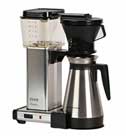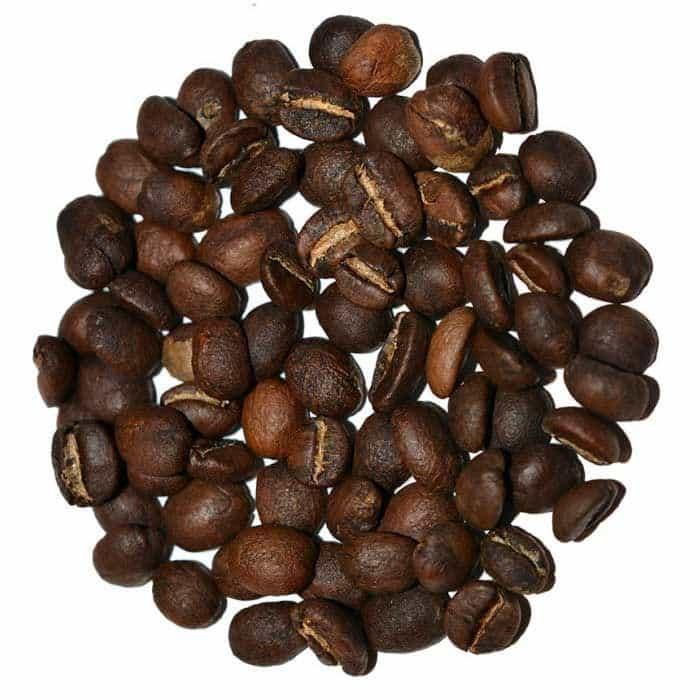How to Brew Coffee
Few things can start the morning better than the wafting aroma of coffee throughout the house. That first sip of a rich, naturally-sweet drink is a delightful way to start the day. Refining the brewing process so that you can be assured of a great cup of coffee is not terribly difficult if you follow a few simple steps and pay attention to some simple details on how to brew a perfect pot of coffee. Learn how to make good coffee in a coffee maker and pursue the art of espresso with 1st in Coffee.
Keep Your Coffee Brewer Clean
Regardless of your coffee brewer, to get the best possible brew with a coffee machine, it has to be clean. Leftover grounds or oily residue in the brewing path can taint the taste of the coffee. Prevention is the best course, so keep your machine clean; if it has been neglected then this is the place to start. When cooled to room temperature visually inspect it and give it a good sniff. If you see coffee stains or it smells like coffee, it needs to be cleaned. CleanCaf from Urnex will not only clean out coffee residue in the brewer but will also descale the areas where the water is heated. Descaling helps remove any calcium and lime deposits. If these deposits are left to build up, over time they can slow the flow of water through the machine and eventually can cause the heating element to fail. The machine's washable parts should be cleaned after each use according to the manufacturer's recommendations. If you use your coffee maker regularly, CleanCaf should be used about once a month to keep it working at its best. As with all cleaning chores, be sure to follow the directions and rinse all parts thoroughly when done. Urnex Grindz works great for grinder cleaning. Just grind about one tablespoon of them every month or so to keep the grinder clean.
Brew At The Right Temperature
If you already have a coffee brewer, that's great. If it is one of the economy devices found in so many stores, and you have not been pleased with the coffee it makes, the problem could be the brewing temperature. The preferred temperature range for brewing the best cup of coffee is about 195 to 205 degrees. Some of the inexpensive machines available today brew at temperatures as low as 165 degrees, and that is a critical problem. While the low price seems inviting, if it can't brew at the proper temperature it will be impossible to create a good cup of coffee. 1st in Coffee offers a wide range of coffee makers. Some of them even have built in grinders and timers to make the coffee before you are even out of bed. Others are equipped with warming plates with adjustable temperature.
The Secret of Great Tasting Coffee
Filtered Water
Very hard water is problematic for the coffee maker as well as the taste; water with no mineral content (such as water processed through a reverse osmosis device) is not going to produce the best coffee either. If your machine does not have its own water filter system, try one of the Brita filter pitchers. These remove a lot of the mineral content and contaminants from tap water which will improve its taste better tasting water makes better tasting coffee.
Choosing a Coffee
A cup of coffee has two components water and coffee. It should be apparent that the coffee you use is critical to the taste of the beverage. There are a few rules to follow when choosing a coffee:
- The most important is that the coffee has to be fresh. That does not necessarily mean that the can was just opened, but that a minimum amount of time has passed since it was roasted. If you do not have a local source of fresh coffee, look for coffee packed in smaller containers so that they will be used more quickly. Even if packed fresh, once a container of whole-bean coffee is opened, the coffee will go stale in a matter of a few days. Try to get it packaged in portions that will last for two to four days once opened. The basic rule is: fresher is better.
- It is highly recommended to purchase whole bean coffee and grind it for each use, grinding only as much as is needed at the moment. After roasting, whole beans can be fresh for about a week or two if properly stored. Once ground, it will only be fresh for a matter of about an hour or less. Even still, you can produce great drinks with ground espresso beans as well.
- A grinder is an excellent investment. Using the grinder at the market is not recommended, as you have no idea how often it gets cleaned nor what beans were passed through it the last time it was used. A burr grinder is the best investment, and even the most basic model is better than buying pre-ground coffee. The devices with a spinning blade create a lot of dust that can make the coffee bitter so those should be avoided. Most of our coffee grinders are capable of grinding for making a pot of coffee (some are dedicated for espresso, so check out our offerings and feel fee to contact us if you have any questions).
- Properly roasted coffee is also critical. Just like cooking a steak, there are all sorts of roast levels that produce many different tastes. Which roast is best? The one that you like!
Discovering The Flavor of Coffee That's Right For You
You probably already know that coffee is grown in tropical regions all over the world. Each of these regions produce coffee with a taste that is in some way unique. For example, many Indonesian and African coffees are deep, earthy, and some have delicious chocolate and fruity undertones. Many of the South American beans are smooth and subtle with a natural sweetness. Try different coffees and espresso drink recipes to find a flavor you like.
Steps To The Perfect Brew
The steps to follow for brewing a pot of coffee will vary depending on your machine, so the first step is to read the instructions that came with your coffee maker. The following are general guidelines for how to brew the perfect cup of coffee:
- Add the water - start by filling the coffee maker with water so that it is ready to go. If the machine needs a filter, have that in place as well. Figure that a cup is six ounces (which is less than a "standard" coffee mug holds). It is confusing, but a "cup of coffee" when you are making coffee is not necessarily the same as a "cup of coffee" when you are drinking coffee, and they can both be different from the standard measure of a cup.
- The right amount of coffee - most complaints about good coffee makers not working properly can be traced back to not using enough coffee. The ratio of coffee-to-water, and how coarse or fine the coffee is ground, will dictate the taste. Start with two tablespoons of ground coffee for each six ounces of water. If your coffee is always bitter the cause is most likely that you are not using enough coffee!
- Determine the coffee grind -the grind is dictated by the machine. Some, like the Bunn brewers, tend to brew quite fast and need a grind that is more coarse than other machines. Brewers that send the water over the coffee at a slower rate can use a finer grind to get a good extraction. Start with the grind as indicated by the grinder's manufacturer and work from there. Grinding finer slows down the brewing process and exposes more coffee for a more thorough extraction.
- Add the coffee grinds - as soon as the coffee is ground, place it in the filter and begin the brewing process as outlined in the brewer's instructions. Make a few pots using the same coffee-to-water ratio and procedure you used with this pot. Once you can make the coffee so that it comes out the same every time, decide if it is to your liking. If it is too bold for your taste, try slightly decreasing the coffee-to-water ratio (if you have been using ten tablespoons, decrease it to nine). You can also adjust the grind a bit more coarse to make a cup with a little less body or a finer grind for a deeper, richer taste.
- Brew just enough - try to brew just enough to last for no more than an hour. If your coffee seems to sit around for a while, it is highly recommended that you use a coffee maker with a thermal carafe to help keep the coffee fresh. These do not need a heating plate to keep the coffee warm, so you are saving a little electricity as well as preserving the taste of the coffee. If you want a coffee brewer with the traditional glass carafe, we suggest getting one with a heating plate that has adjustable temperature to keep the coffee from being burnt or over-cooked as it sits in the carafe.
- Experiment with grind levels - keeping notes through the process will help in the future. For example, you might find that the Sumatra Mandheling is best at one grind level with a specific coffee-to-water ratio, but the full city roast Organic Peruvian Chanchamayo is better at another setting. Having a written reference of these variables will prove to be invaluable over time! Check out our top selling burr grinder from Capresso.
With a little care and attention to details after you learn how to make coffee in a pot, you will soon be making one delicious pot after another.




